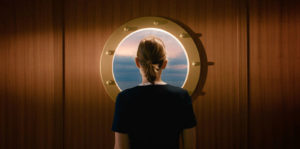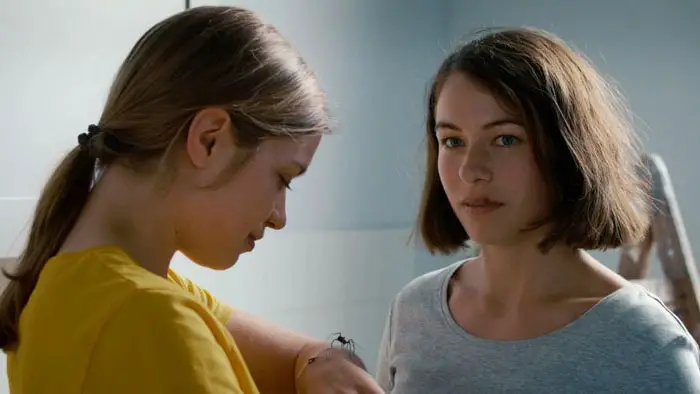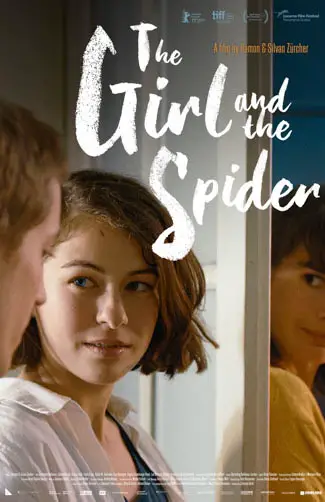
It doesn’t take long for writers/directors Roman and Silvan Zürcher to set the tone for The Girl and the Spider, a drama that thrives on an inescapable sense of interpersonal awkwardness. In one early sequence, the mother of one of the main characters abruptly points out an embarrassing cold sore on a younger woman’s upper lip, relishing in the opportunity to bask in maliciousness. Buckle up because we thus begin our journey into a Swiss apartment complex filled with a motley assortment of complicated men, women, and children.
While our attention is divided between a plethora of colorful characters, the most substantial portions of the narrative follow Lisa (Liliane Amuat). Lisa’s moving out of the flat that she shared with Mara (Henriette Confurius), with whom she’s previously had a relationship. The filmmakers hold back crucial details as to what happened during their time together, but the performances of Amuat and Confurius are immensely effective, to the point that we know it was anything but uneventful. Mara harbors a simmering resentment over the fact that Lisa is leaving, but the disparate collection of friends and family assisting in moving furniture prevent a reconciliation, even if it feels like an itch we can’t scratch as an audience.

“Mara harbors a simmering resentment over the fact that Lisa is leaving…”
This is a recurring trend in The Girl and the Spider, the Zürchers’ follow-up to their 2013 gem The Strange Little Cat. Feelings and motivations are always close to the surface, but they expertly direct the actors to utilize stark dichotomies between verbal and physical communication. Some viewers might feel disoriented by these complex interactions, but much like in the surrealist films of Buñuel (the influence of whom is hard to escape here), the proximity of hidden desires and motivations adds a delightfully unnerving quality to the work. And if we need any reminder that all is not well in this otherwise idyllic Swiss residence, a gnarly spider lurks throughout the complex (arachnophobes be warned), perhaps acting as a sinister reminder of what’s lurking beneath the surface of every character we meet.
Moving is an objectively miserable experience, but the directors go well beyond the physical aspect of relocating. They recognize that not all the structures we inhabit in our lives are physical. Emotions can be just as engrained in the physical, and the formal approach of the Zürchers bears this out. Much of the story’s framing is centered around tight medium shots or loose close-ups of the actors. This relegates the actual physical space of the flat as secondary to the interpersonal reactions of the individual characters, serving to further emphasize the brilliant performances.
As indicated by the many shots of a jackhammer breaking the cement in the street, moving cracks our very foundation, but perhaps its physical ramifications are minuscule compared to that of severing ties with ones we love. This is at the heart of The Girl and the Spider, a work that succeeds on multiple levels and reestablishes Roman and Silver Zürcher as filmmakers of the highest order. Meticulously crafted with powerfully nuanced performances, the film represents the best of what European cinema has to offer and is easily among the year’s best.

"…succeeds on multiple levels..."


